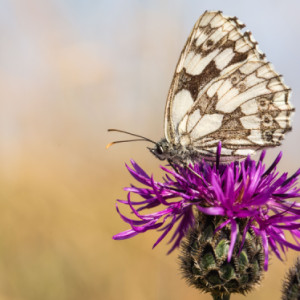Clustered Bellflower
I was late to bed on Sunday, and together with too much celebratory food and one too many Pimm's, I felt somewhat groggy this morning. A stiff cup of coffee soon perked me up, and I felt well enough to take Pete out to one of his spring sites to gather in some pitfall traps.
While he was working I had a short, but surprisingly hot. meander round Barnack Hills and Holes. The grasses were all very brown, but the late summer limestone flora was looking good - mostly comprising drought-resistant species that thrive in hot, dry conditions. The second generation of Chalkhill Blues aren't out yet, but there were still a reasonable number of Marbled Whites (see extra), though some were looking so tatty it was a wonder that they could fly at all.
The whitish flowers of Dodder and Squinancywort carpeted the sward in places, punctuated by taller areas of purple and mauve - Field Scabious, Greater Knapweed and the rather local Clustered Bellflower shown in the image. If you look very closely you may spot its associated weevil, Cleopomiarus graminis. The beetle is rarer than its host plant, having strongly southern distribution, but locally you often find the two species together.


Comments
Sign in or get an account to comment.


